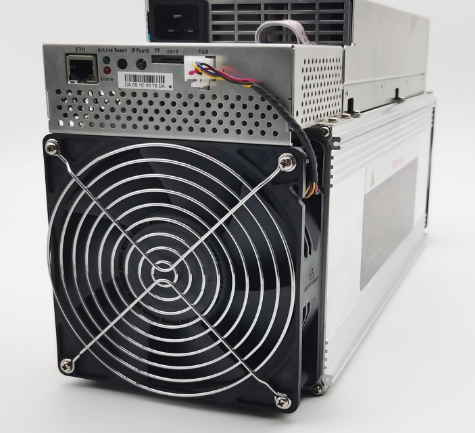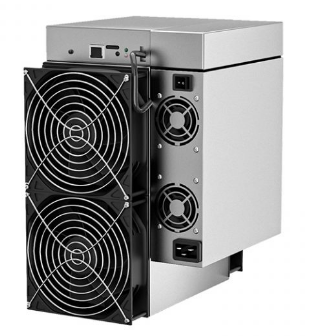Industrial-Grade Power Distribution System Design and Load Balancing
Here’s a professional technical article on Industrial-Grade Power Distribution System Design and Load Balancing for Cryptocurrency Mining Infrastructure:
Power Distribution Engineering for High-Density Cryptocurrency Mining Environments
The exponential growth of cryptocurrency mining operations has pushed industrial power infrastructure to its technological limits, demanding unprecedented levels of precision, reliability, and intelligent management. Modern mining facilities represent complex ecosystems where power distribution becomes a critical determinant of operational efficiency, equipment longevity, and overall economic performance.
Advanced power distribution architecture represents a fundamental cornerstone of successful mining infrastructure, transcending traditional electrical engineering approaches. The core challenge lies in creating a dynamic, adaptive power ecosystem capable of managing high-density computational loads while maintaining exceptional stability and thermal efficiency.

Architectural Foundations: Hierarchical Power Distribution Topology
Implementing a sophisticated three-tier power distribution architecture provides mining operations with unprecedented flexibility and resilience. This approach strategically segments power management across main distribution rooms, floor-level distribution centers, and granular row-level distribution cabinets, enabling precise load allocation and robust fault isolation mechanisms.
The main distribution room serves as the primary power intake and initial transformation point, typically interfacing with high-voltage utility grid connections. Here, industrial-grade transformers and primary switchgear establish the foundational power management infrastructure. Advanced medium-voltage switchgear with intelligent monitoring capabilities ensures seamless power transfer and initial load segmentation.
Floor distribution rooms represent the intermediate power management layer, transforming high-voltage inputs into standardized mining equipment voltage requirements. These spaces integrate sophisticated busbar systems featuring low-impedance copper conductors optimized for minimal transmission losses. Precision current transformers and digital protective relays enable real-time load monitoring and instantaneous fault detection.
Row distribution cabinets constitute the final, most granular power allocation tier. These compact yet sophisticated units directly interface with mining hardware, implementing advanced load balancing and thermal management strategies. Integrated smart circuit breakers with programmable logic controllers enable dynamic power redistribution and instantaneous protective responses.

Load Balancing and Power Optimization Strategies
Effective load balancing represents a nuanced engineering challenge in high-density mining environments. Traditional electrical distribution models prove inadequate when confronting the unique power consumption characteristics of modern mining hardware.
Implementing precise phase sequence load balancing requires sophisticated algorithmic approaches. By continuously monitoring instantaneous current draw across three-phase systems, intelligent distribution networks can dynamically redistribute electrical loads, minimizing neutral line current and reducing systemic transmission losses.
Advanced low-impedance busbar designs utilize high-conductivity copper alloys with carefully engineered cross-sectional geometries, dramatically reducing resistive losses. Precision-machined connection points and advanced thermal management coatings further enhance electrical transmission efficiency.
Thermal Management and Predictive Monitoring
Comprehensive thermal imaging detection represents a critical component of modern mining infrastructure protection strategies. Integrating high-resolution infrared scanning systems enables proactive identification of potential thermal anomalies before catastrophic failures occur.

Distributed temperature sensors strategically positioned throughout power distribution networks provide continuous thermal mapping. Machine learning algorithms analyze these datasets, developing predictive models that anticipate potential failure points and recommend preemptive maintenance interventasts.
Intelligent Protection and Automation Systems
Contemporary mining power distribution networks incorporate multi-layered protection mechanisms extending far beyond traditional circuit breaker implementations. Integrated automation systems leverage advanced programmable logic controllers capable of executing complex protective sequences within microseconds.
These systems implement sophisticated protection protocols including:
- Instantaneous overcurrent detection
- Phase imbalance compensation
- Harmonic distortion monitoring
- Predictive equipment health assessment
- Automated load shedding during critical fault conditions
Economic and Operational Implications

Optimized power distribution architectures deliver substantial economic advantages. Reduced transmission losses, enhanced equipment reliability, and minimized downtime translate directly into improved mining operation profitability. Conservative estimates suggest that sophisticated power management strategies can improve overall system efficiency by 12-18% compared to traditional infrastructure approaches.
Future Technological Trajectories
Emerging technologies like wide-bandgap semiconductor switches, advanced machine learning predictive maintenance algorithms, and modular power distribution architectures promise continued evolution in mining infrastructure design. The convergence of electrical engineering, computational intelligence, and distributed systems thinking will drive next-generation power management strategies.

Conclusion
Industrial-grade power distribution represents a complex, multidimensional engineering challenge demanding holistic technological integration. By embracing sophisticated architectural principles, intelligent monitoring technologies, and adaptive management strategies, mining operations can construct robust, efficient electrical ecosystems capable of supporting increasingly demanding computational workloads.